Pixel 9 Pro Fold review: does the next Google foldable soar high?
We may earn a commission if you make a purchase from the links on this page.

Pixel 9 Pro Fold Intro
With Samsung moving its summer Unpacked event to July, Google saw an opportunity — and stepped right in. Instead of waiting until October, the Pixel 9 series were launched in August 2024, headlined by the debut of the Google Pixel 9 Pro Fold. While it’s technically the Pixel Fold 2, Google has rebranded it to fall more in line with the mainline Pixel phones — both in naming and feature set, especially on the AI front.
Now, it doesn’t inherit all the bells and whistles from the Pixel 9 Pro — especially when it comes to the camera system — but it still stands out as a foldable. Like its predecessor, it avoids the tall, narrow outer screen of the Galaxy Z Fold in favor of a wider 20:9 cover display, making it far more practical to use when folded. The refined, thinner design improves pocketability and comfort while preserving durability and daily usability.
Running on Android 15 (soon to get Android 16!), the Pixel 9 Pro Fold brings noticeable upgrades to the foldable experience. This includes smarter AI tools for customization and interaction, better multitasking and app continuity, improved battery efficiency, and the latest security enhancements. It’s not just a foldable gimmick — it’s a true flagship.
Priced at $1,799, it’s definitely in premium territory, and Google is positioning it as the high-end choice for users who want flexibility and cutting-edge software in one device. But how does it hold up in everyday use? And does it give you more than the Pixel 9 Pro or other foldables in terms of camera quality, battery life, and the actual value of the fold?
Let’s dig in.
Priced at $1,799, it’s definitely in premium territory, and Google is positioning it as the high-end choice for users who want flexibility and cutting-edge software in one device. But how does it hold up in everyday use? And does it give you more than the Pixel 9 Pro or other foldables in terms of camera quality, battery life, and the actual value of the fold?
Score too low? Not at all! Here at PhoneArena, we have developed an elaborate system, which scores phones on exact criteria to really make use of the full 1-10 rating scale and combat "rating inflation". Our scoring widget shows you what that particular phone got, but also an average rating for all devices in its price class, so you can get a better idea of where it stands. The Google Pixel 9 Pro Fold is 0.1 above the average for premium-priced phones out there, with its software support, photo quality, and biometrics with AI assistance giving it a boost above the rest. Unfortunately, its slow charging speed and lack of really powerful processor drag it back.
Table of Contents:
Also read:
- Google Pixel 9 Pro Fold vs Honor Magic V3: Battle for the future of foldables
- Best foldable phones to buy: the top foldables we tested and recommend
- Google Pixel 10 Pro Fold release date expectations, price estimates and upgrades
Pixel 9 Pro Fold Specs
Tensor — always the rebel
Let's kick things off with the specs — this is what you are getting for your $1,799:
| Specs | Pixel 9 Pro Fold |
|---|---|
| Size and Weight | Folded 6.1 x 3.0 x 0.4 in (155.2 x 77.1 x 10.5 depth mm) Unfolded 6.1 x 5.9 x 0.2 in (155.2 x 150.2 x 5.1 mm) 257 g |
| Display | 8" main screen, almost square OLED, 120 Hz 6.3" cover screen, 20:9 OLED, 120 Hz |
| Processor | Google Tensor G4 |
| Software | Android 15 |
| Cameras | 48 MP main 12 MP ultra-wide 10.5 MP telephoto 5x 10 MP front 10 MP front inside |
| Battery Size | 4,650 mAh |
| Charging Speeds | 21 W wired 7.5 W wireless |
| Prices | 16 GB / 256 GB for $1,799 |
Pixel 9 Pro Fold Design and Display
Bigger, better
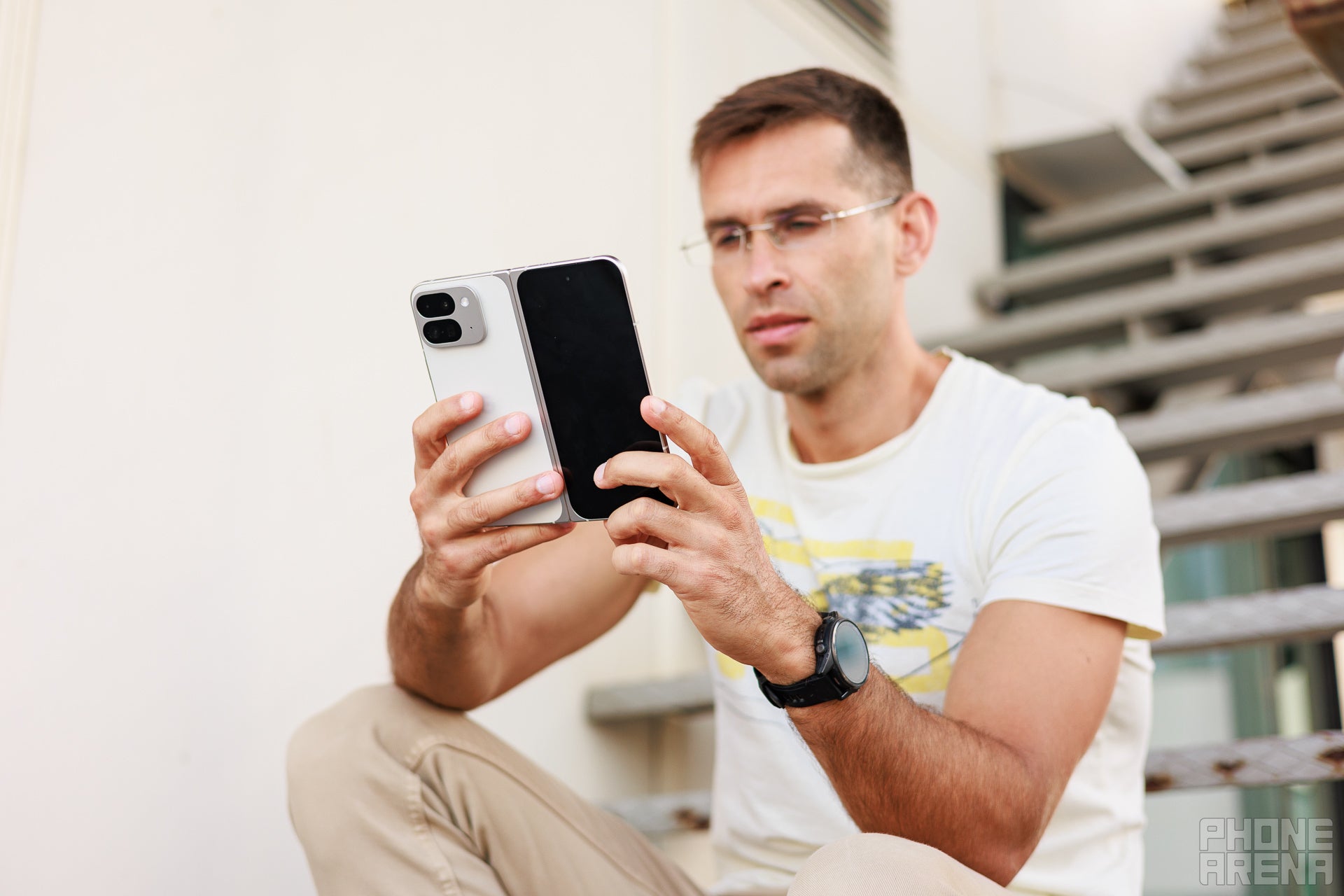
The Pixel 9 Pro Fold has a much sleeker design than the first Pixel Fold (Image by PhoneArena)
As with the OG Pixel Fold, the Google Pixel 9 Pro Fold is big and wide on the outside granting a nicely spaced display for dual-thumb typing. It has a 6.3 inch diagonal with a ratio of about 20:9, the same as a regular Pixel 9.
It's a metal construction and is slightly thinner than before, but not really lighter.

Thin is in (Image by PhoneArena)
We are happy to report that the hinge also got an upgrade. The Pixel Fold did feel great for the most part, but it doesn't open all the way to make the phone flat, unless you force it. As before, Pixel 9 Pro Fold has IPX8 ingress protection — water-resistance is there, but Google didn't try the limited particle protection that Samsung achieved with the Galaxy Z Fold 6.
The camera bar on the back is replaced by a new square shape on the Pixel 9 Pro Fold only, whereas all other Pixel 9's have a flat, pill-shaped visor on the back. The new Fold's outside panels are protected by Gorilla Glass Victus 2 both front and back. The colors the Pixel 9 Pro Fold comes in are two — Obsidian and Porcelain.
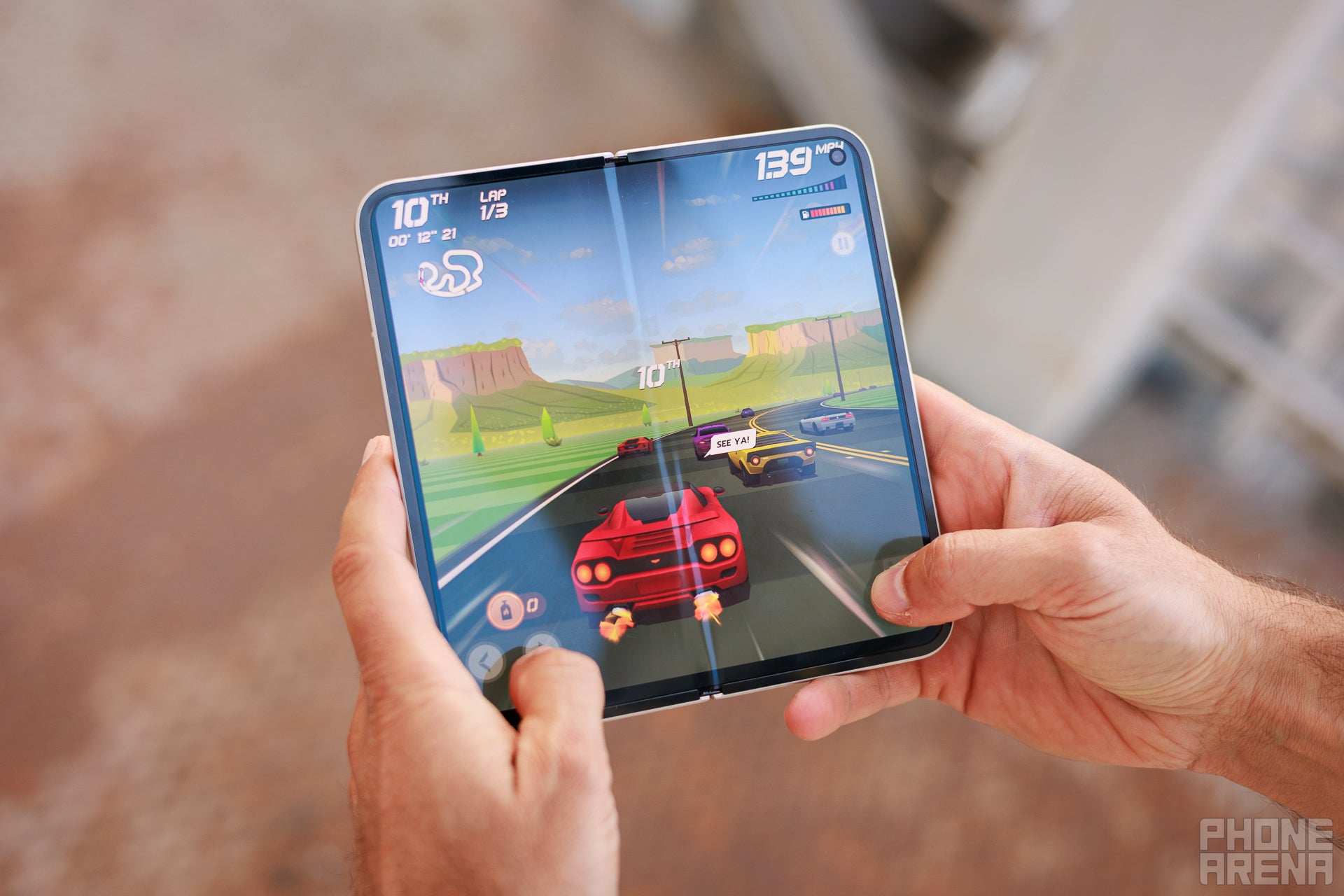
The Pixel 9 Pro Fold has a massive, 8-inch main screen (Image by PhoneArena)
Once we open up the phone, we should be greeted by a new, 8" display with a nearly square aspect ratioof 1:1.04, which is a slight change from last year's model with 7.6 inches in 6:5 format. It's still an OLED panel with a 120 Hz refresh rate. Outside, we also get a 120 Hz OLED cover display. Peak brightness has also gotten an upgrade at 2,700 nits for both screens! However, we do not measure peak brightness, which only measures a part of the display for a short period of time — we measure full screen brightness as we blast its sensors with light, to see how the phone would perform under direct sunlight. Here are our display benchmarks:
No under-screen scanners to be used here as Google still relies on the fingerprint reader embedded in the power switch yet another time. And facial unlocks, of course! Thanks to advancements in machine learning, Google was able to make the simple selfie camera unlock so secure and reliable, that it has been approved to work with banking apps. That happened with the Pixel 8 phones last year, and it carries over to the Pixel 9 series.
Pixel 9 Pro Fold Camera
Excuse me, I have "Pro" in my name

Unique camera bump on the Fold (Image by PhoneArena)
Google insists on calling the Fold a Pixel 9 Pro, right? But that doesn't carry over to the camera department. While the rest of the line got fancy new hardware, the Pixel 9 Pro Fold has a 48 MP main, 10.5 MP ultrawide, 10.8 MP telephoto camera with 5x zoom. With digital zoom, it taps out at 20x SuperRes, unlike the regular Pixel 9 Pro which gets up to 30x.
At least we get Video Boost — you can have your videos, shot on Pixel 9 Pro Fold, uploaded to Google's cloud to get enhancements in details and dynamics. While regular Pixel 9 Pros will also be able to upscale to 8K via Video Boost, this feature is unclear in the Pixel 9 Pro Fold's specs.
The selfie cameras seem to be identical both inside and out — 10 MP cameras with phase detection autofocus, both on the cover screen and on the main display.
Main Camera
Main camera photos look pretty good with colors close to realism and pretty balanced dynamics. It does get a bit challenging with high dynamics, as can be seen in sample 3 with the crushed shadows. Pixels do have that signature magenta cast, but we feel it's been reined in and isn't obnoxious, there's just a pinch of Pixel style. Details can look a bit soft sometimes, but at least it doesn't try to oversharpen.
At night, the camera does fall apart a bit. Details become quite soft as noise reduction seems to be working overtime. Colors get washed out and we get a weird yellow-ish or green-ish cast. The photos are still OK, but not alive or energetic like in competitors like the Galaxy Z Fold 6.
Ultra-wide camera
The ultra-wide camera has the odds stacked against it — it's a lower-res sensor and an ultra-wide lens naturally makes details look fluffier. But, in general, these ultra-wide shots look prettu nice. We would've preferred a notch up on the exposure and some more contrast so highlights pop more and give them something more to get excited about. But we can't say they look unrealistic, over-processed, or plain bad.
Zoom Quality
The 5x telephoto lens does allow Google's SuperRes zoom to flex some muscle — even at 10x, photos appear sharp and clear. While it only caps out at 20x, we feel that very few occasions ask for more than that from a phone camera. Still, it's worth noting that if you are looking for extreme zoom headroom, the Pixel 9 Pro Fold is not the phone you should be looking at.
Selfies
As per usual, the selfie camera has a wide-angle lens to allow for group selfies, should you need them. A button allows you to crop in for a more "normal" selfie, but details do get softened by that wide lens. Colors and skintones specifically look pretty good, though.
Pixel 9 Pro Fold Performance & Benchmarks
Tensor smarts

Good for gaming? (Image credit - PhoneArena
By now, it's an established trend that Google doesn't chase the biggest and best benchmark numbers with its processors. The Tensor line of silicon is designed in-house by the search giant, and it's made to work with the Pixel phones, enable their exclusive Google Assistant features, and support the AI tricks with Google Gemini.
What it doesn't have is extreme performance bragging rights. We didn't expect the Tensor G4 to be more powerful than the Qualcomm Snapdragon 8 Gen 3. And sure enough, it is good enough to run Pixel phones smoothly, and yes — it will play games. But it won't be crushing benchmark scores.
Performance Benchmarks
Thus far, we haven't been disappointed by the Tensor G3 in the Pixel 8 phones, nor the Tensor G2 in the Pixel Fold. So, we are not worried.
Pixel 9 Pro Fold Software
Google's Pixels come with close-to stock Android. Difference being is that the Google Assistant gets extra features like Guide My Call, where you don't need to listen to the full automated message in a robo support line, but the Pixel will tell you which numbers you need to press to proceed to the relevant menu. Or Call Screening, where the Assistant will pick up the phone for you, ask what the call is about, and relay via text — you choose whether you want to answer or go to voicemail after that.
Advanced features in Google Photos also first launch on Pixels, or remain exclusive to them. Like the Magic Editor in the past or, more recently, the Video Booster feature, which is on all Pixel 9 phones this year.
Google is also hard at work to fuse Gemini AI with the Android experience. And, of course, Pixels will be the launchbed for everything that's new (and may get quite a few exclusives). Here's what's coming:
- Multimodal integration - you will be able to ask Gemini to pull data from multiple of your Google apps and services and accomplish tasks with them. For example "Find my resume from Drive, summarize it in a paragraph", or "On which day next week will I be free to go to the movies?".
- Gemini Live - natural conversations with the Assistant. Interrupt and change topics on the fly!
- Add Me - when taking group photos, take a picture of the group, then swap in with someone else. Pixel AI will be able to stitch a photo as if you were all in it
- Auto Frame - part of the Magic Editor. Will edit and change framing of photos, based on what the AI knows about good photography practices
- Reimagine - edit a photo via text prompt. Type out what you'd like to see and have the AI edit the photo for you
- Video Boost - will upscale video up to 8K resolution. Now works twice as fast
- Weather app - Gemini Nano will now give you a quick summary of weather conditions
- Magic List - ask phone to create complex shopping lists automatically. "Plan a taco dinner for 6, one vegetarion option"
- Screenshots app - use Gemini Nano to quickly recall old screenshots that you once took to remember something. On-device processing only
- Call Notes - comes up after a voice call with a quick summary of your conversation. On-device processing thanks to Tensor G4
There's also an exclusive Pixel Studio app, which lets you generate images with text prompts — Apple is getting the same with Image Playground in iOS 18.
As far as the UI goes, it's good ol' Android. Colorful, simple, snappy, big buttons, bold colors. Of course, we have AI wallpaper generators... can't be seen wearing the same wallpaper two days in a row!
The Pixel 9 Pro Fold has now gotten Android 15, which brings more features oriented towards foldable phones. The app taskbar on the bottom can now be permanent, you can save splitscreen app pairings as quick-access icons, and the continuity between closing and opening the foldable has been made... Well, supposedly better and more accurate but some apps still don't behave. There are also security features behind the scenes, and battery endurance optimizations, which we can't confirm right now — it feels like it was on release day.
Software updates? Google commits to seven years of Android builds! This means the Pixel 9 Pro Fold should be considered viable well into 2031... granted you take good care of that battery!
Pixel 9 Pro Fold Battery
Bigger phone, smaller battery?
The Pixel 9 Pro Fold has a 4,650 mAh cell, which is slightly smaller than what the Pixel Fold had in its trunk — 4,821 mAh. We won't be panicking here, as the Tensor G4 is advertised as being more energy-efficient, and the G2 inside the original Pixel Fold is a bit long in the tooth already. We wouldn't be surprised if the Pixel 9 Pro Fold lasts a bit longer in our battery tests. Well, let's check:
PhoneArena Battery Test Results:
The Pixel 9 Pro Fold is pretty good with its battery when doing simple, single-task oriented things. Like browsing the webs, scrolling through, reloading pages. However, once we start streaming YouTube non-stop or 3D gaming, opponents with more powerful processors take the upper hand. Still, we wouldn't say we don't trust the Pixel's battery, or that we've felt like it's not enough in our day-to-day usage. But putting them head-to-head like this really shows us where there's more value, if battery life is a top priority.

This one is Plug-and-Wait (Image credit - PhoneArena)
Google was quite elusive when pointing out exact charging specs for the Pixel 9 Pro Fold. And we think it was trying to circumvent a disappointment — the Pixel 9 Pro Fold charges with 21 W max on the wire. That's... not great it 2024. But OK, what about wireless charging? That's capped ot 7.5 W, which is quite an old standard. Current contemporary smartphones, even foldables like the Z Fold 6, charge with 15 W vie Qi2. Apple's new iPhone 16 Pro gets 25 W via MagSafe.
Google Pixel 9 Pro Fold Audio Quality and Haptics
Google's haptics have been so good on Pixels for years now. And Google knows it — there was a point when Android's interface was so filled to the brim with tips, taps, and little rattles, that it was getting annoying. Now, it's at a good place. It's fun, responsive, quick, and snappy.
When it comes to sound, the Pixel 9 Pro Fold has full stereo with two side-firing drivers that end up on left and right when the phone is unfolded and held in "landscape". Oddly, the two speakers are on a different flap, so you end up with a diagonal positioning. That's not troublesome for sound, but it's a bit awkward to find a way to hold it without a finger plugging one of the speakers.
How's the sound? Pretty OK. It has a good amount of bass, but we feel like it lacks a good meatiness or details in the mids. The high range comes close to being harsh — almost like it's distorting, but not quite there. They are... OK, but we prefer the speakers on the Z Fold 6, for example.
Should you buy the Google Pixel 9 Pro Fold?

If the pocket is big enough... (Image credit - PhoneArena)
It’s a tough one to call. The Pixel 9 Pro Fold is so comfortable to use as a “regular phone” when closed that you might find yourself rarely unfolding it. And that naturally leads to the question: why pay the premium for a foldable at all?
At this point, the best answer we have is: “Well… it gets bigger.” That larger screen can be handy — sure, you can split-screen apps, or prop it open in tent mode during a video call. These are nice perks. But if we’re being honest, most foldables still don’t offer a transformative experience with the unfolded screen. It’s great for viewing big spreadsheets, yes. But for most people, that extra space goes underutilized.
As noted in our Pixel 9 Pro Fold vs Galaxy Z Fold 6 comparison, Samsung still pushes the productivity angle more convincingly. The Z Fold 6 supports DeX for desktop-style use, and pairs with the S Pen, complete with optional cases that make the combo seamless. It feels like a true attempt to make use of the foldable format beyond just a bigger screen.
But let’s say you’re fully bought into the Google ecosystem. Is the Pixel 9 Pro Fold a better buy than the Pixel 9 Pro XL?
Our answer: soft no. The Fold is cool, unique, and premium — but unless you specifically want the foldable format, the Pixel 9 Pro XL gives you more camera power and better value at a lower price.
As noted in our Pixel 9 Pro Fold vs Galaxy Z Fold 6 comparison, Samsung still pushes the productivity angle more convincingly. The Z Fold 6 supports DeX for desktop-style use, and pairs with the S Pen, complete with optional cases that make the combo seamless. It feels like a true attempt to make use of the foldable format beyond just a bigger screen.
Our answer: soft no. The Fold is cool, unique, and premium — but unless you specifically want the foldable format, the Pixel 9 Pro XL gives you more camera power and better value at a lower price.
Follow us on Google News

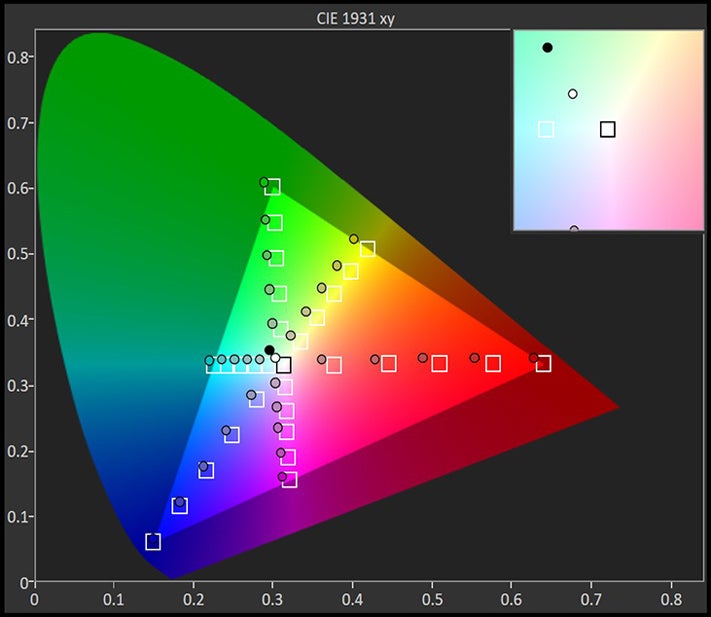

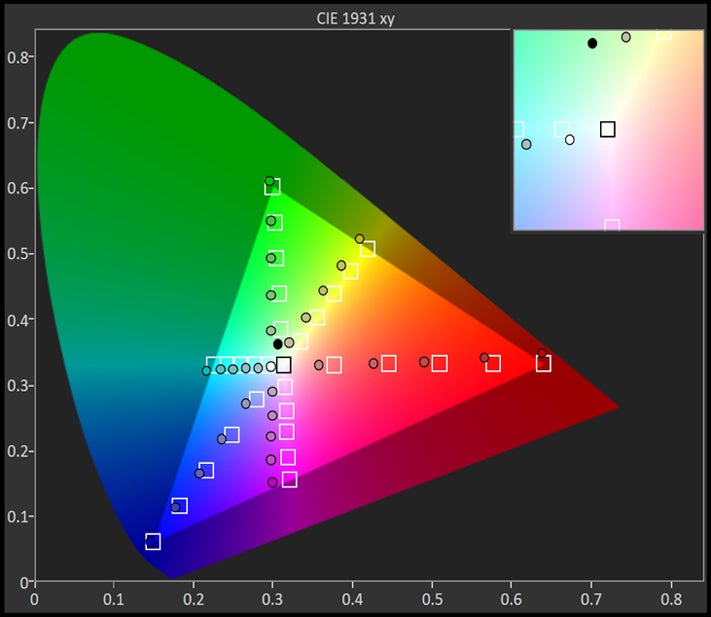


















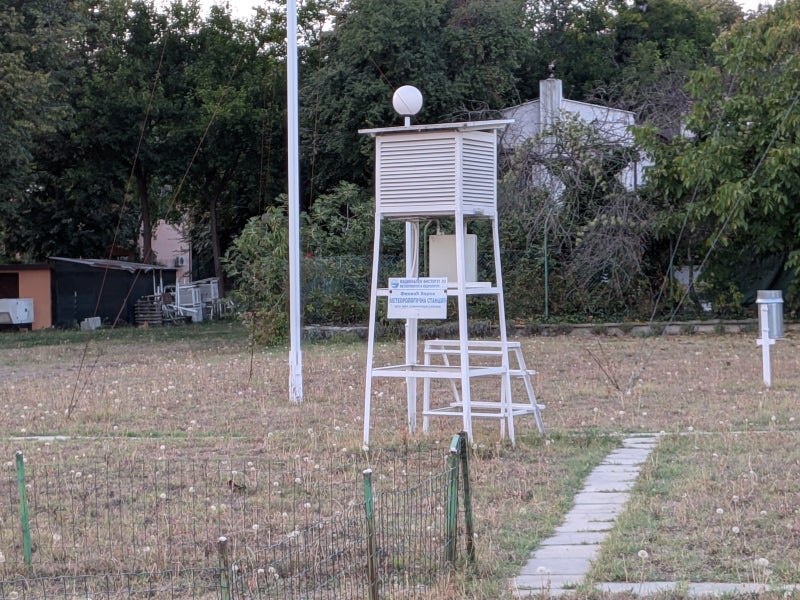
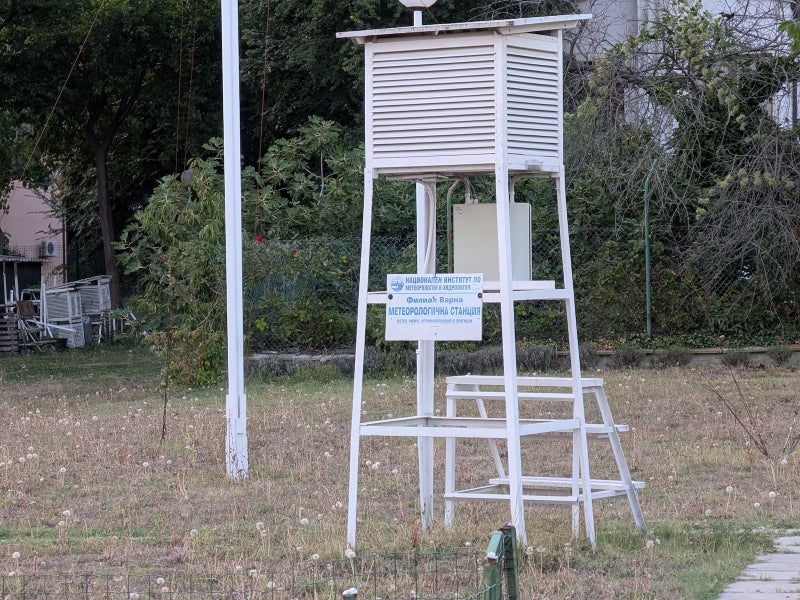



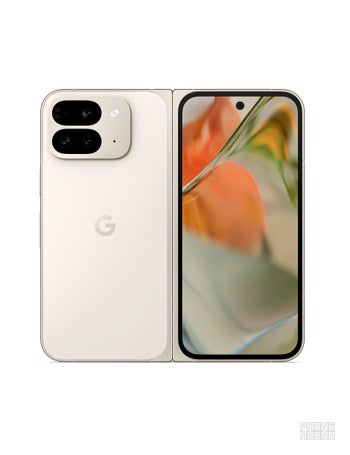



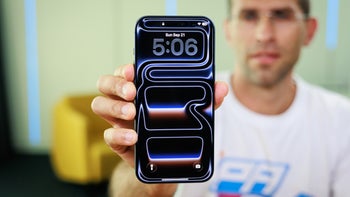

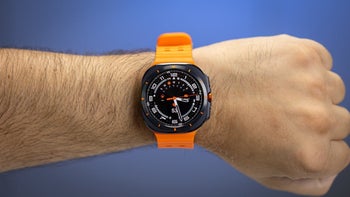
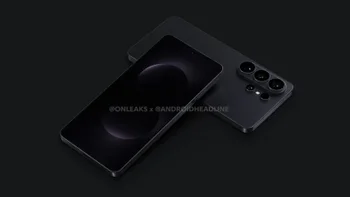
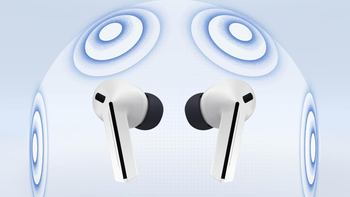
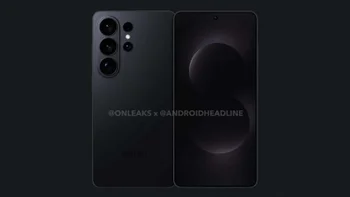

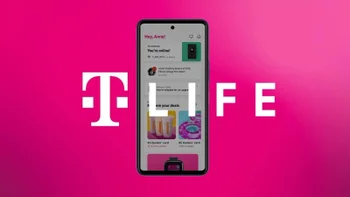

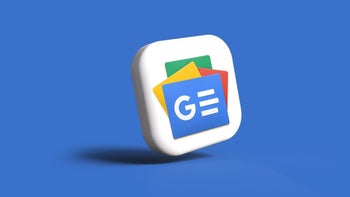
Things that are NOT allowed:
To help keep our community safe and free from spam, we apply temporary limits to newly created accounts: